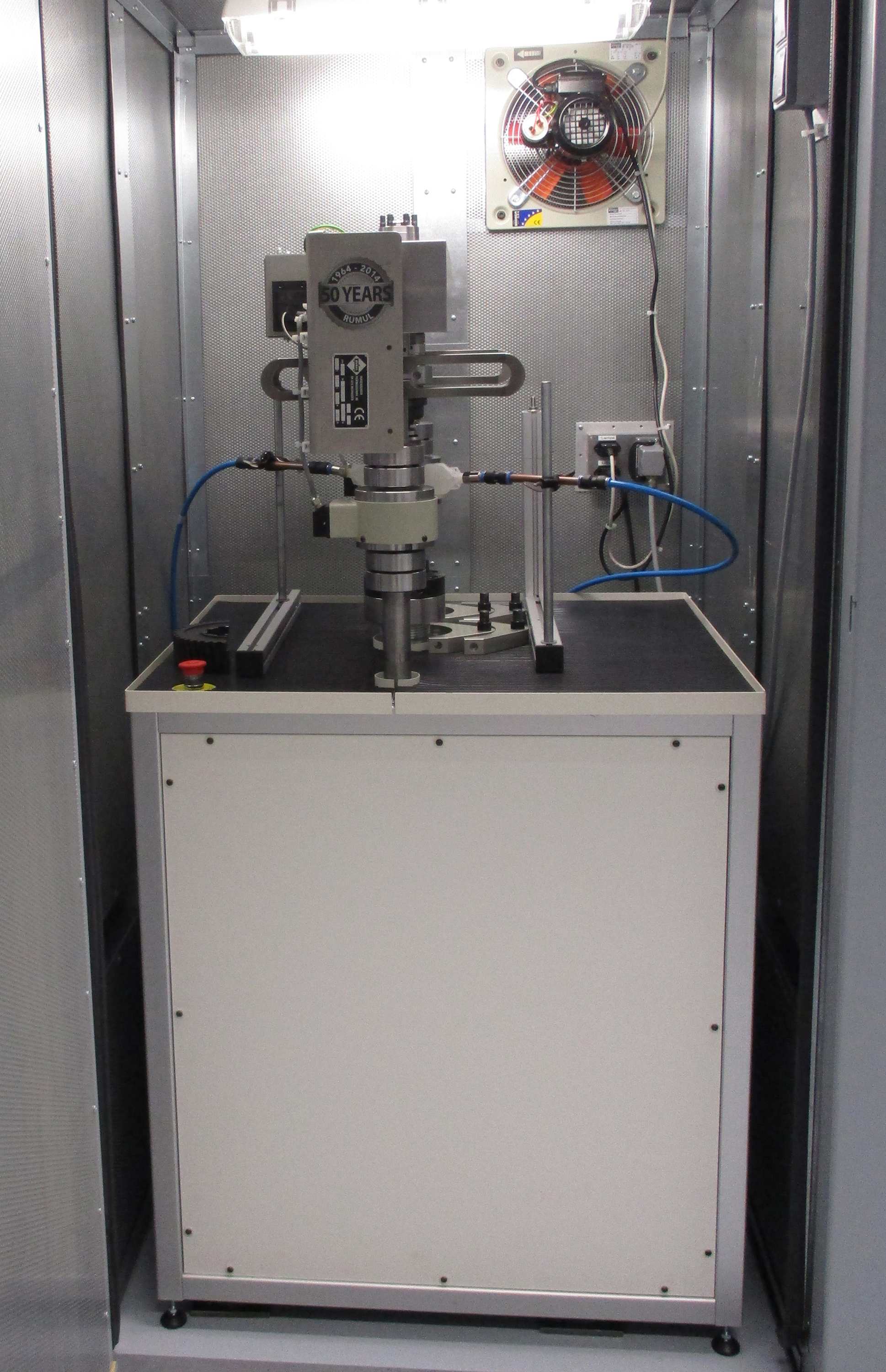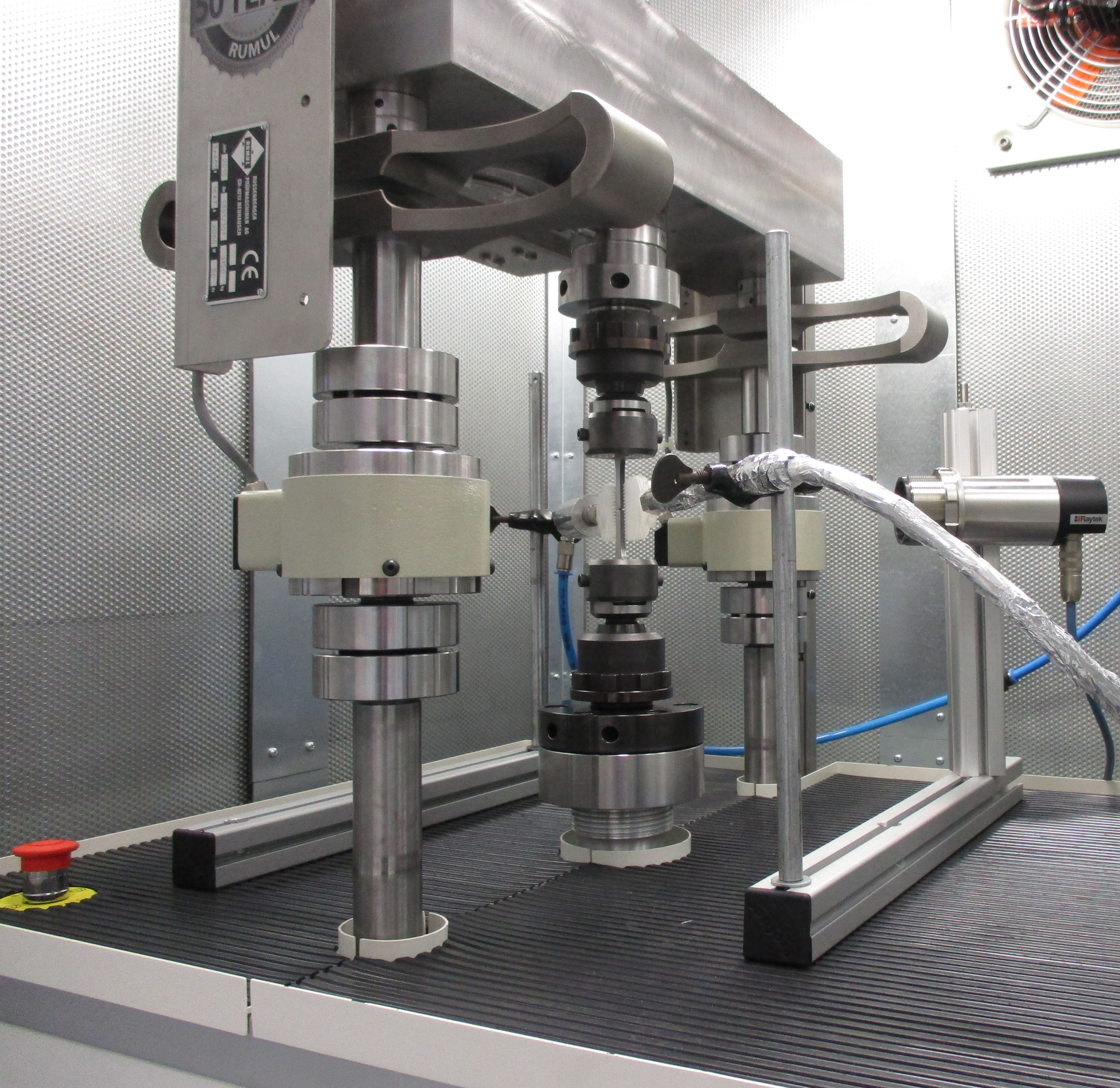"Constant dropping wears away the stone" – new 1000 Hz resonance pulsator implemented at Fraunhofer IWS Dresden
Material fatigue, a gradually progressing damage process, occurs under particular environmental influences, such as mechanical load, altering temperatures, UV-radiation or the influence of a corrosive medium. A static load which does not cause damage in an individual case may cause a component’s total failure under repeated strain. The following question occurs often: How many repetitions can a component bear? Or: How must the component be designed so that it can bear limitless cycles, that is, to be of everlasting fatigue strength. In cooperation with the company Russenberger Prüfmaschinen Fraunhofer IWS scientists have implemented the latest generation of a resonance pulsator the “RUMUL-GIGAFORTE”. The electro-magnetically driven resonance pulse test unit enables a test frequency of about 1000 Hz and thus decisively reduces the measuring time for the detection of fatigue strength.
In many applications, the material’s fatigue strength is the decisive criterion to guarantee an effective component design through the utmost utilization of the material-specific strength potential. The strength verification according to custom regulations requires a statistically safeguarded evaluation of the cyclic strength behavior in time and/or fatigue strength range. In many cases the final process parameters are not yet determined, however, the operator urgently needs reliable information about presumed fatigue strength behavior in failure-critical load areas as well as about material conditions, which are often significantly dependent on the manufacturing process.
Depending on the number of cycles, more than 25 samples are needed for a statistically ensured Wöhler curve. If an experimentally ensured Wöhler line profile, beyond the classical cycle numbers of 2 million load changes, is required, a very critical time gap between product development and evidence of material and component reliability emerges. Even if a classical resonance pulse test stand with 100 Hz test frequency is used, a testing time of one or two months has to be scheduled for 20 to 25 samples and a cycle number of 10 million load changes.
Here Fraunhofer IWS scientists are able to offer their support. The IWS laboratory equipment of for high frequency fatigue testing enables tests frequencies of 100 to 20,000 Hz. Significant progress was achieved with very high test frequencies for those cases in which the sample’s geometry limited the application in the past.
In cooperation with the company Russenberger Prüfmaschinen the latest generation of resonance pulsators, the RUMUL-GIGAFORTE, was implemented at the Fraunhofer IWS laboratory in summer 2015. The RUMUL-GIGAFORTE is an electro-magnetically driven resonance pulsator, which is applied for test frequencies about 1000 Hz .The system closes the gap between classical resonance pulsators and ultrasound fatigue testing technologies. Presently, IWS scientists are testing the performance of the novel system for versatile materials, samples and components.
Prof. Martina Zimmermann, head of the IWS team “Materials Characterization and Testing“ and chairholder at the Technische Universität Dresden, faculty Mechanical Engineering, has more than 10 years experience in the field of high frequency fatigue. “To obtain reliable data about fatigue strength it has to be ensured that possible frequency influences are excluded or are at least clearly known. Unwanted heating due to high test frequency must be avoided. It is of utmost importance that the component is truely exposed to the desired load. If our hitherto positive experiences are confirmed the term “process-related testing” gains a new dimension”, M. Zimmermann enthusiastically explains.
Those who would like to learn more about the new testing system are cordially invited to visit the Material Week 2015, at the exhibition complex Dresden, from September 14 to 17, 2015. Our experts will be pleased to help you with their know-how at the joint booth of the Materials Research Network, hall 3.
 Fraunhofer Institute for Material and Beam Technology IWS
Fraunhofer Institute for Material and Beam Technology IWS
